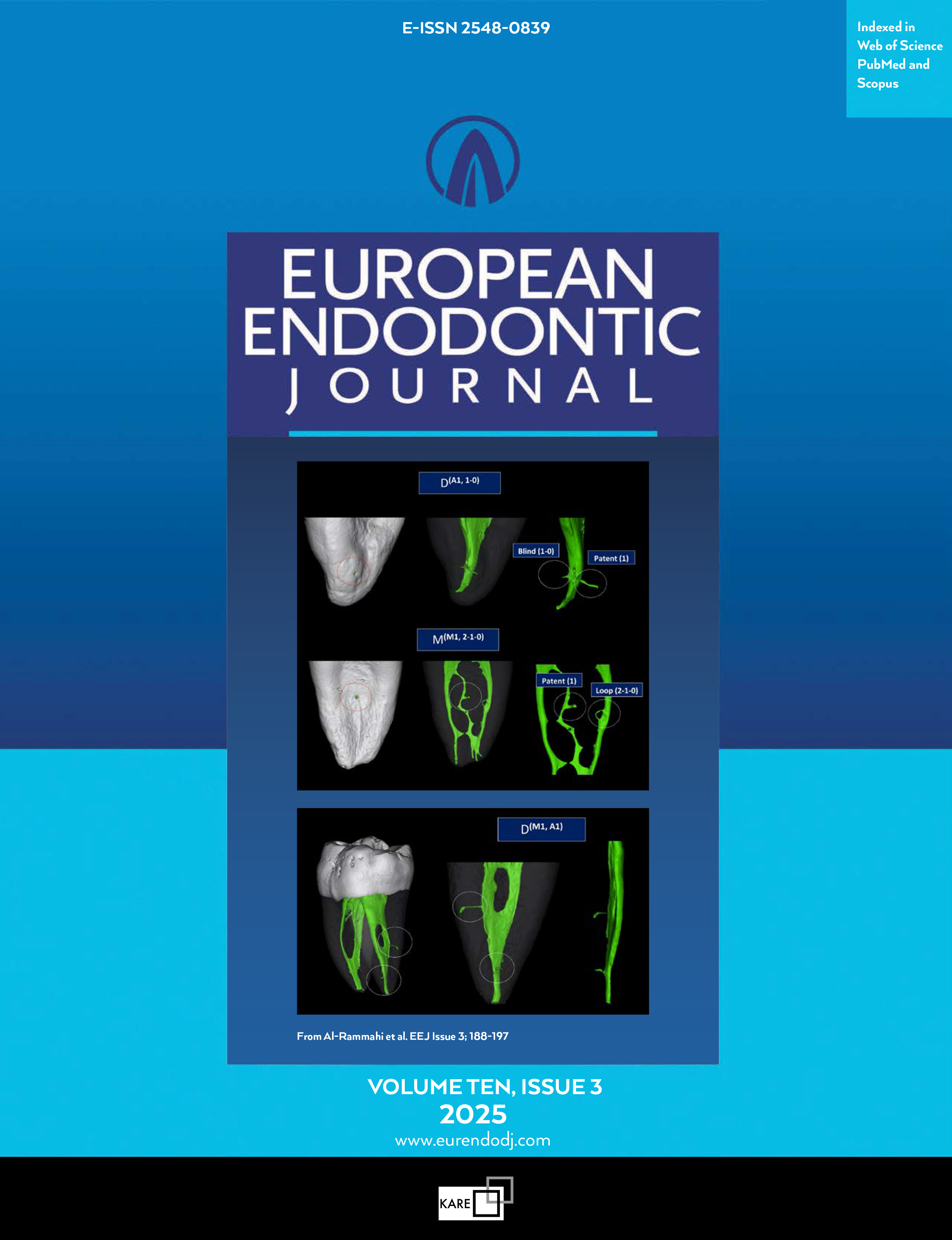Metrics
2024 IMPACT FACTOR
5 year Impact Factor
Eigenfactor Score
2024 CiteScore
Journal Citation Reports
(Clarivate 2025, JIF Rank)
Healing outcome of different aqueous based calcium hydroxide intracanal medicament in patients with pulpal necrosis and symptomatic apical periodontitis: A randomised controlled trial
Objective: This study aims to assess and compare the healing outcome associated with different aqueous-based calcium hydroxide intracanal medicaments in patients with pulpal necrosis and symptomatic apical periodontitis.
Methods: 75 patients with pulpal necrosis and symptomatic apical periodontitis in permanent mandibular molar teeth were selected as the part of this study. The participants were randomly allocated to three groups, each comprising 25 patients, based on the type of intracanal medicament used during the treatment procedure. Group 1 consisted of calcium hydroxide (CH) mixed with 0.9% saline (NS), Group 2 contained calcium hydroxide combined with 2% lidocaine, and Group 3 included calcium hydroxide with 2% chlorhexidine (CHX). The Periapical Index Score was utilized to assess the healing of periapical lesions in pre-operative and post-operative periapical radiographs at 3-month intervals for 12 months. The Kruskal-Wallis test was implemented to determine the significance, with Post Hoc Dunn tests for multiple comparisons.
Results: At the 12-month follow-up, the CH+CHX group demonstrated significantly improved periapical healing, with a mean PAI score of 1.57 ± 0.66, compared to CH+LA (2.27 ± 0.63) and CH+NS (2.48 ± 0.79), with Kruskal-Wallis p<0.05. The mean time to achieve a healthy periapical status (PAI ≤ 2) was shortest in the CH+CHX group (8.10 ± 3.28 months), followed by CH+NS (8.23 ± 3.28 months) and CH+LA (8.25 ± 3.31 months), with the multivariate Log-Rank test indicating a statistically significant difference among the groups (p<0.05).
Conclusion: The findings of this study indicate that calcium hydroxide when combined with 2% chlorhexidine as an aqueous vehicle demonstrated superior healing of periapical lesions in patients with pulpal necrosis and symptomatic apical periodontitis compared to saline or lidocaine.
Manuscript Language: English


